
Responsive Controls & Expressive Shapes
web menu by Css3Menu.com
Marshall McLuhan thought of games as the microcosmic expression of a culture's latent desires. What can we glean from the thirty years' work and billions of dollars of revenue(so far) generated by the gaming convention known as the "platform game"?
The visual structure of a side-view platform game is the uniting quality that defines the genre (and connects the "platform" genre with associated genres, such as the "jump and run" and the "beat-'em-up"). More than anything else, this hallmark visual structure resembles nothing so much as a child's drawing, with its lack of any three-dimensional perspective.

Rudolf Arnheim called it "The Egyptian Method" of making pictures.

Do children draw in this diagrammatic fashion merely because they don't understand the principle of the convergence of parallel lines as they recede from the observer, or are they interpreting the task of projecting the three-dimensional world onto a two-dimensional surface differently? Perhaps rather than asking what the viewer might see if the paper were a stationary window, they ask what the world might look like if the paper could look around and composite the image afterward.
So, in children's drawings and in side-view platform games, a common visual structure emerges. The ground is usually near the bottom edge of the frame, and the character stands about 5-20% of the total vertical height. The character of the image is that of a structural diagram, such an architectural plan - the priority is to depict action clearly.
How and why did video game developers find and refine this visual convention? The historical record shows that many crucial moments emerged from sheer serendipity, and commercially-successful games became models for replication by aspiring developers. The earliest exemplars of the third-person side-view game might shed some light on reasons behind the developmental path it went on.
One of the key aspects of the side view is the encounter with gravity--jumping and falling are often synonymous with life and death. No other view can present falling to one's death with such dramatic impact.
Technical limitations meant that early video games quite graphically abstracted - objects from games of this era are frequently represented by a single dot. In contexts such as these, the amount of ambiguity means that the visual perspective can't be categorized with any certainty. In these circumstances, the ambiguity likely helped inspired creators "see what they wanted to see," and rapidly evolve the nascent form into new directions. Here's a look at the progression of early games that contributed to the form now known as the 'platform game' (or more broadly, the third-person, side-view game). Hover your mouse over (or tap if you're on a mobile device) the game screenshots to see them in action.
All game art and excerpts are copyrighted to, and property of their respective owners.


Pong (1972)
Nolan Bushnell, the Atari co-founder who spearheaded the development of Pong, claimed to have based it on a game of electronic ping pong that he played in college, eight years earlier. So while the idea was not necessarily a new one, the implementation (by Allan Alcorn) endowed the sparse visuals with admirable subtlety: the 'paddles' were invisibly divided into eight regions to adjust the angle of rebound, and the game ran at a fluid 60fps.

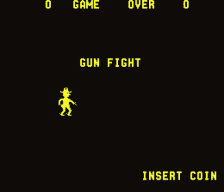
Gun Fight (1975)
Gun Fight depicted human characters from the side-view (a first), but they walk vertically, thus positing an isometric environment. The characters in Gun Fight exhibit a basic two-frame walk cycle, which always comes to rest on the more 'central' pose (the pose which provides a more natural transition to all of the possible actions, which are in this case, walking, shooting, or being shot). There is a single pose to represent the state of being hit by a bullet, no matter if the bullet hits the cowboy's foot or hat. The pose is designed to look 'good enough' for a hit anywhere on the cowboy's body, but also simultaneously designed to look best for a hit in the most 'dramatic' area (the gun/head area of the cowboy).

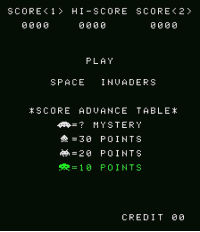
Space Invaders(1978)
It's hard to overstate the influence that Space Invaders had on the gaming industry. Thought it was initially designed to represent the layout of a top-down ("plan") view of a military conflict, with a phalanx of troops and a roving gunner, creator Tomohiro Nishikado was morally opposed to the depiction of shooting human enemies. But in experimenting with alien armies, Nishikado was not satisfied with the enemy movements. The pure black background against which the brightly-lit characters are drawn (a product of the rendering process) seems to resonated with a night sky and outer space. A top-view with a black background doesn't work as obviously, since the ground is not often much darker than the objects on it. Also influenced by the recent release of the Star Wars film and his childhood interest in H.G. Wells' The War of the Worlds, Tomohiro created his octopus-, squid-, and crab-inspired aliens. The introduction of music in to the game doubtlessly played a large role in its success, and the $600 million dollars that Space Invaders earned for Taito in less than a year after its release cemented its status as an icon and a model for future work. Space Invaders saw eventual profits reach just under half of a billion dollars, almost as much as Star Wars' gross at the box office, and about three times Star Wars' net. Until this point, there had been no video game depicting a strict side view. Not insignificantly, no video game had profited more than $16 million, either. Many shooting games with science fiction themes followed.
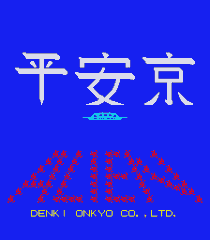
Heiankyo Alien (1979)
I include this game in response to the oft-cited claim that Space Panic (see next entry) is a copy of this game. In terms of its objectives and rules, the two games are similar, but as is evident in this clip, Heiankyo Alien clearly employs a top-down maze structure. The lack of contact between the objects and the walls of the maze, and the changing orientation of the player both serve to emphasize the intentionality of this perspective. Space Panic should indeed be accorded the credit for its innovative visual structure.

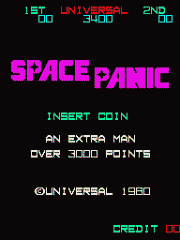
Space Panic (1980)
Released in 1980, Space Panic is almost certainly the primary progenitor of the modern platform game. It's difficult to attribute the decisions leading this paradigm shift; perhaps the developers saw that a strict two-dimensional view like Space Invaders would strand the player on the ground. This impulse to enable the player to explore more of the screen motivated the development of ladders and the all-important platform. This motif showed immediate resonance with gamers and developers alike, and constituted a genre unto itself within a few years.

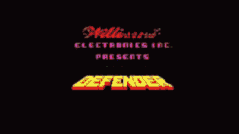
Defender (1980)
Defender doubtlessly raised the bar for the implementation of physics principles as well as the application of appropriate imagery that supports the movements. The developers (led by Eugene Jarvis at Williams Electronics) innovated in many arenas, not least of which included the invention of horizontal scrolling (in both directions, no less).

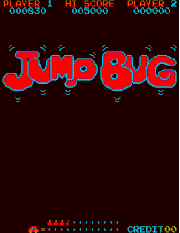
Jump Bug (1981)
Alpha Denshi's "Jump Bug," a game that was perhaps as innovative as Donkey Kong. In its depiction of a bounding anthropomorpic Volkswagen, it demonstrates the some of the first horizontal "scrolling" in a video game seen only in Defender before. Jump Bug was also the first character to jump between surfaces. If the squash-and-stretch animation on the car had anything to do with the actions of the car (rather than just looping endlessly), this game might have been better known. Also, it is prohibitively difficult.

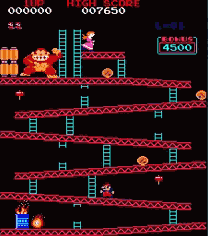
Donkey Kong (1981)
Donkey Kong, (insert most impressive accolade), introduced "Jumpman," the character later known as Mario, to the public. Aesthetically, the game is a marvel of efficiency, making Jump Bug look chaotic in comparison. The animation silhouettes are relatively consistent, there is no extraneous animation, such as 'idle' animation played while the character isn't moving. Donkey Kong also demonstrated an advance beyond Space Panic in terms of understanding a hierarchical implication of the new camera angle Whereas Space Panic overlooked the implications of altitude (casting a "level field" inherited from the top-down maze genre), Donkey Kong adjusted the configuration to model its visual structure after a traditional fairy tale, or, more topically, the film "King Kong": logistical topology: a man rescues a woman from a gorilla. The result was the most striking visual drama yet created.

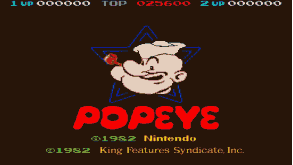
Popeye (1982)
The clarity gained by anatomically suggestive poses is outweighed by the stroboscopic noise created, and Nintendo went back to more consistently-silhouetted, thicker characters. A ball like Sonic the Hedgehog is often better than an outline of a realistic human. Nintendo abandoned the property due to licensing issues, but they also shied away from the aesthetic style.

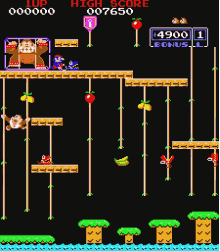
Donkey Kong Jr. (1982)
Donkey Kong Jr. turned the Donkey Kong story upside-down and pitted the player as Donkey Kong's son, tasked with rescuing his father. Despite more moving on-screen elements, the game is much easier to visually comprehend than Popeye, due largely to the simpler silhouettes.

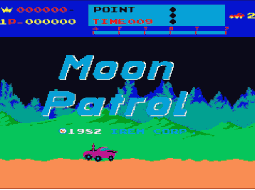
Moon Patrol (1982)
Moon Patrol is notable for its emphasis on jumping, and the first demonstration of parallax scrolling (Jump Bug's scrolling might be considered parallax if the stationary sky counts as a layer). Games like this point were largely an exercise in combining known elements in new ways.

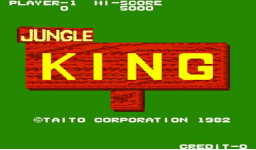
Jungle King (1982)
Taito didn't miss the impact that Donkey Kong's rescue motif had on the game playing, but broke the left-to-right convention and cut to a new stage as a progressive action, introducing an integral element to the sub-genre of "cinematic platform games."
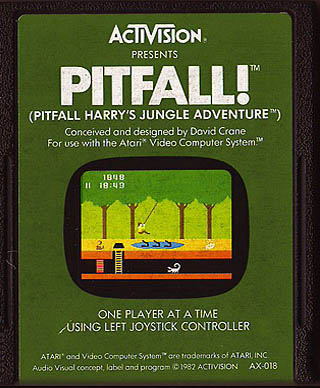
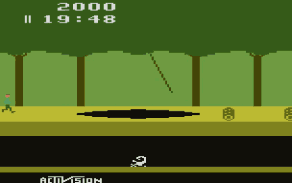
Pitfall! (1982)
Pitfall was notable because of its introduction as a home-only game (with no coin-operated cabinet for public availability), developed for the Atari 2600. According to developer David Crane, the impetus for the entire game was to demonstrate the 'realistic running man' animation he'd created.

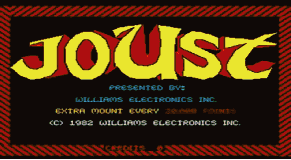
Joust (1982)
In consciously deciding to avert the space themes that had been so popular since Space Invaders, the Williams Electronics once again showed themselves to be some of the primary innovators in the video game industry. The screen-wrapping behavior (wherein a character disappearing off of the left edge of the screen reappears, at the same height and trajectory, on the right side) is inherited from the game "Asteroids" (released in 1979)

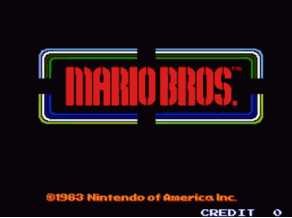
Mario Bros. (1983)
The official debut of Mario brought a slew of genre-establishing conventions, including "head-bumping" (both as an attack from below and a way to get power-ups), and coin collecting. The physics of the characters is noticeably simpler than Super Mario Bros. or even Joust.

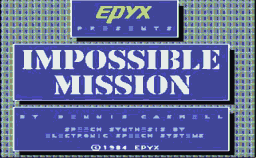
Impossible Mission (1984)
This game is often credited as establishing the genre of the cinematic platform game, often characterized by the comparatively realistic character appearance and physical capabilities. I contend that the use of "cuts"(edits) from one scene to another, rather than scrolling, is another key distinction of the cinematic platformer.
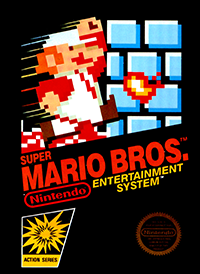
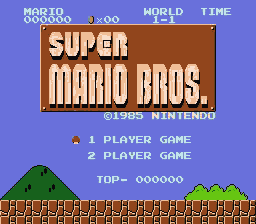
Super Mario Bros. (1985)
In pitting Mario and Luigi against Bowser to rescue Princess Peach, Nintendo initiated the "Mario mythos," which has been continuously developed for the past thirty years. The physics of the controlled character was a significant leap beyond anything seen before, with the jump height based on how long the jump button was held down, and the ability to run if holding down a button. Importantly, Mario (and his brother Luigi) have simple, boxy silhouettes that change animation frames only minimally, thus allowing the sense of physicality to come from the character's movement through space.
By this point, many of the compelling and satisfying aspects of controlling a side-view character had been firmly established: fluid, physically-derived motion displayed at 60 frames/second, clear silhouettes that do not distract from the trajectories of motion, and environments that take advantage of the diagrammatic perspective.